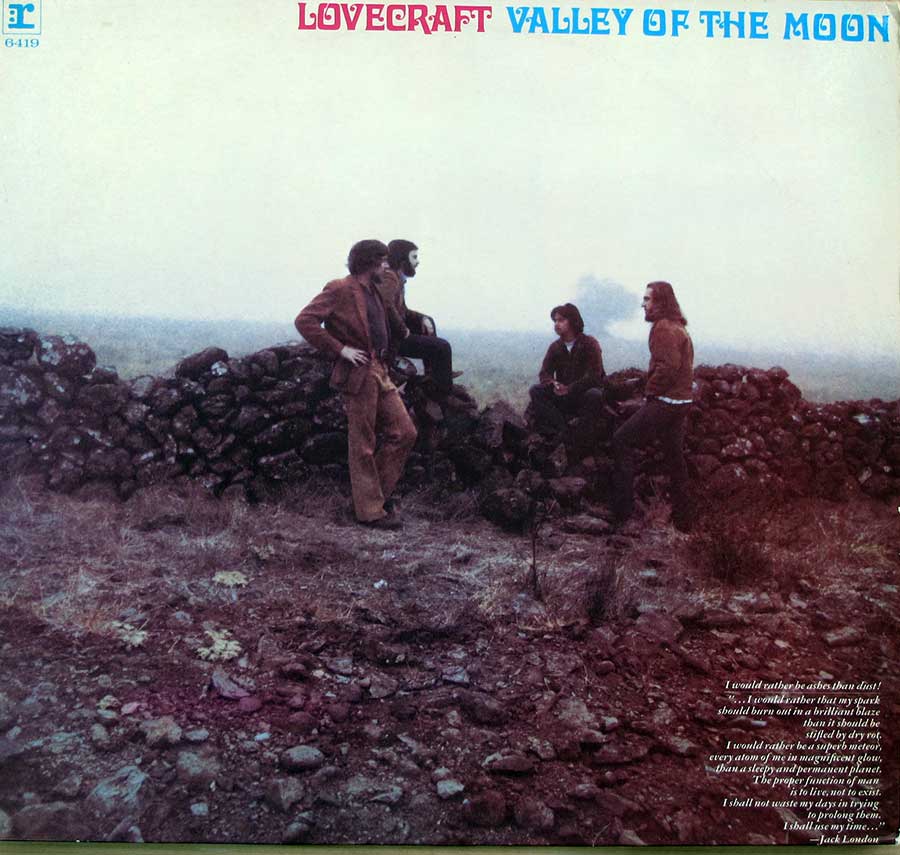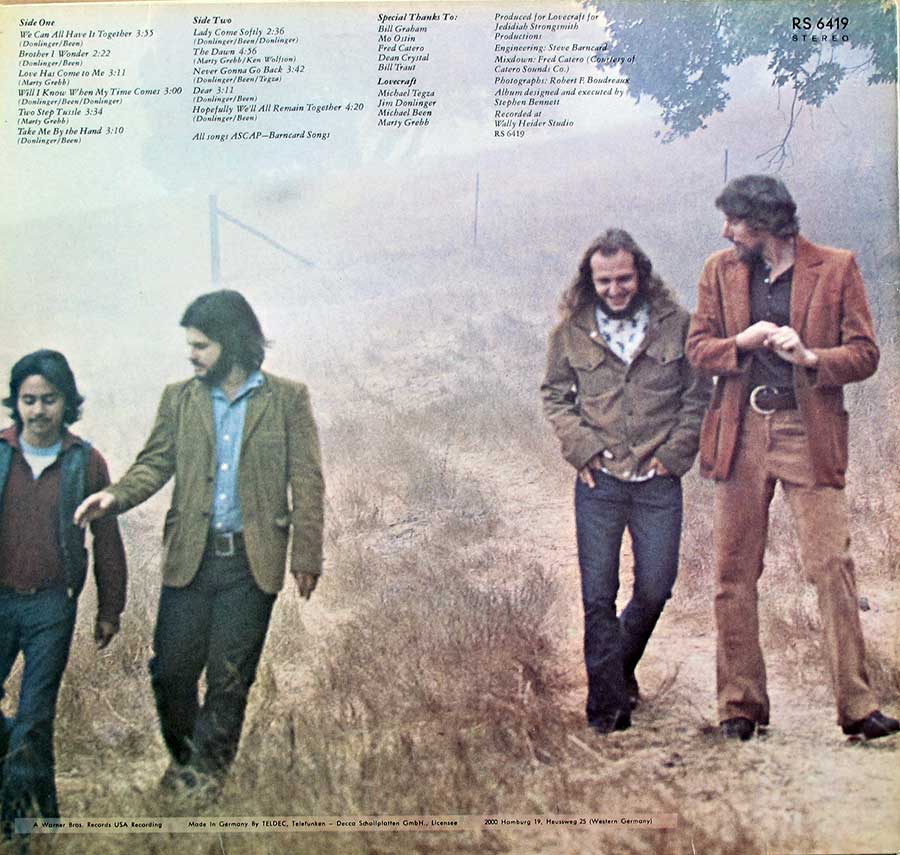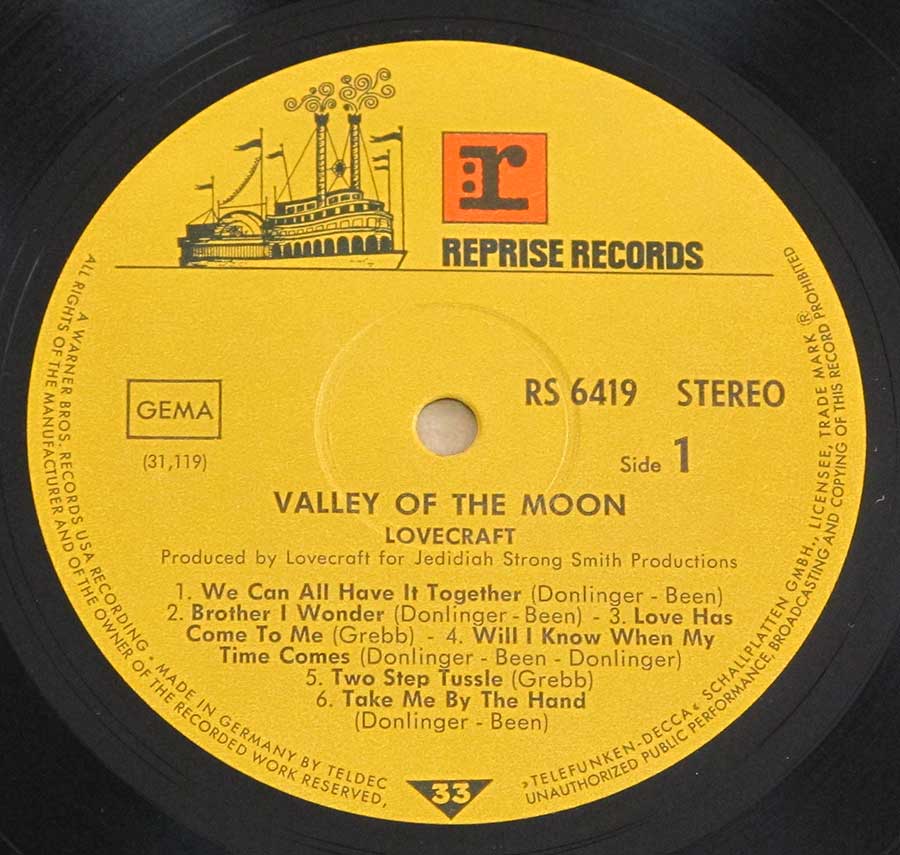"Valley Of The Moon" Album Description:
In the world of progressive rock, Lovecraft's "Valley of the Moon" stands out as a testament to the genre's experimental and boundary-pushing nature. Released as the band's third album, this musical odyssey captivated audiences with its intricate compositions, innovative soundscapes, and the unique blend of rock and psychedelic elements. In this web-page, we delve into the history of the creation of Lovecraft's "Valley of the Moon," exploring the band's background and the making of this seminal album.
Lovecraft: A Brief Overview:
Before delving into the specifics of "Valley of the Moon," it's essential to understand the backdrop against which Lovecraft emerged. The band originated in Chicago during the late 1960s, a period marked by a cultural revolution and the rise of diverse musical genres. Lovecraft, formed by former members of the Chicago-based band The Rogues, embraced the progressive rock movement, characterized by its willingness to experiment with different musical styles and unconventional structures.
The Genesis of "Valley of the Moon":
"Valley of the Moon" came to life against the backdrop of a band in creative flux. Lovecraft's earlier albums, including their eponymous debut and the follow-up "Lovecraft II," had established their presence in the progressive rock scene. However, it was with "Valley of the Moon" that the band truly found their sonic identity.
The album's creation was a collaborative effort, with each member contributing their unique skills and ideas. The lineup for this particular venture included notable musicians such as George Edwards, Michael Tegza, and Stephen Monahan. Together, they embarked on a musical journey that would redefine the boundaries of progressive rock.
Musical Exploration and Innovation:
"Valley of the Moon" is hailed for its musical diversity and willingness to explore uncharted territories. The album seamlessly weaves together elements of folk, jazz, and psychedelia, creating a sonic tapestry that reflects the band's eclectic influences. The incorporation of unconventional instruments and complex arrangements showcased Lovecraft's commitment to pushing the boundaries of what progressive rock could achieve.
Reception and Legacy:
Upon its release, "Valley of the Moon" received critical acclaim for its innovation and musical craftsmanship. The album's ability to appeal to both dedicated prog enthusiasts and a broader audience contributed to its lasting impact. Over the years, Lovecraft's "Valley of the Moon" has become a cult classic, influencing subsequent generations of progressive rock musicians.


